THE BIRTH OF OUR VISION
Our story reflects the legacy of resilience and creativity Black Americans have demonstrated throughout history. When plans were made to run the Crenshaw/LAX airport light rail line through Black LA’s main thoroughfare, we knew the train’s arrival would provide an unprecedented opportunity to expose thousands of tourists and new visitors to the cultural heart of the Black community. So, we rose to meet the moment. Coming together, the community decided to create one of the largest Black art and economic revival programs in the country. We are building community spaces, planting 100 new trees, investing in local businesses, creating local jobs, and funding commissions for more than 100 Black artists.
Now, when the world enters Los Angeles along the new Metro line, it will be greeted by the art, energy, legacy, and accomplishment of Black LA.
TODAY
Destination Crenshaw’s purpose is to power an economic and cultural revitalization of the Crenshaw corridor. We are doing this in three ways:

MeANINGFULLY SUPPORTING BLACK-OWNED BUSINESSES on the boulevard and ensuring that 70% of construction workers building the project live in our community.

Addressing and providing development solutions for the Crenshaw community as a bulwark for gentrification through community-led architectural design and the creation of new community spaces and urban canopy.

BEING AN ECONOMIC ENGINE FOR BLACK ARTISTS AND THE CREATIVE ECONOMY.
By the time our project is complete, Destination Crenshaw will be the largest Black largest project in the U.S. and will have commissioned works of art from 100 young, emerging, mid-career and established artists.
STAYING PUT
Sankofa Park, designed to become one of our community’s most utilized gathering places, will be the flagship of 10 beautifully designed community spaces meant to provide an intimate setting for shade, seats to rest on, and art to inspire.
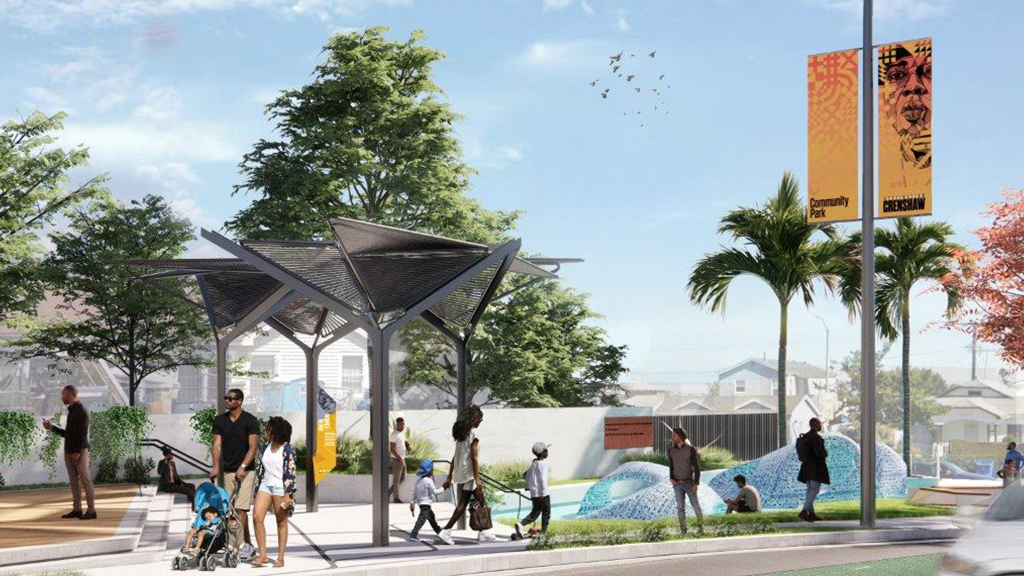
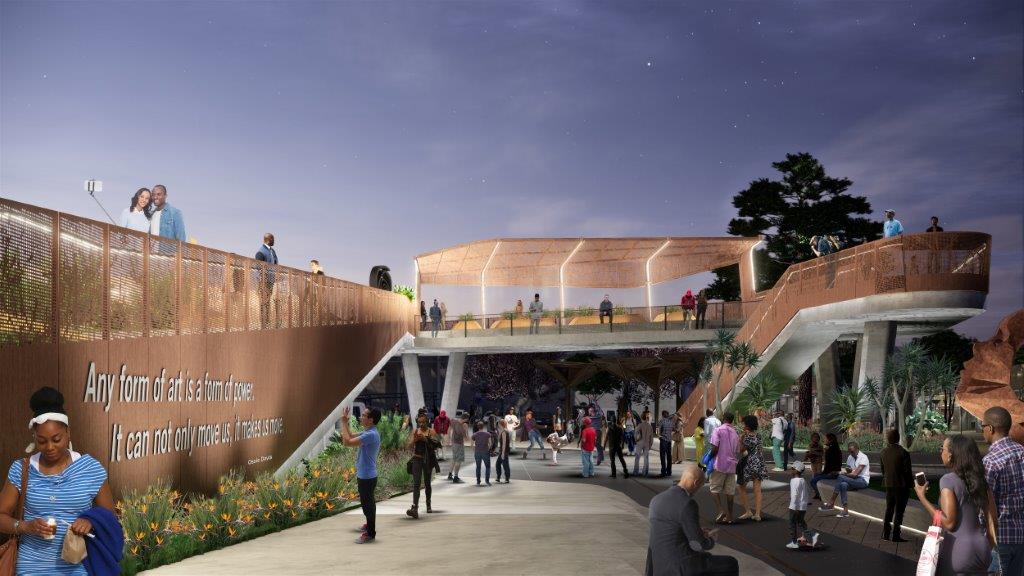
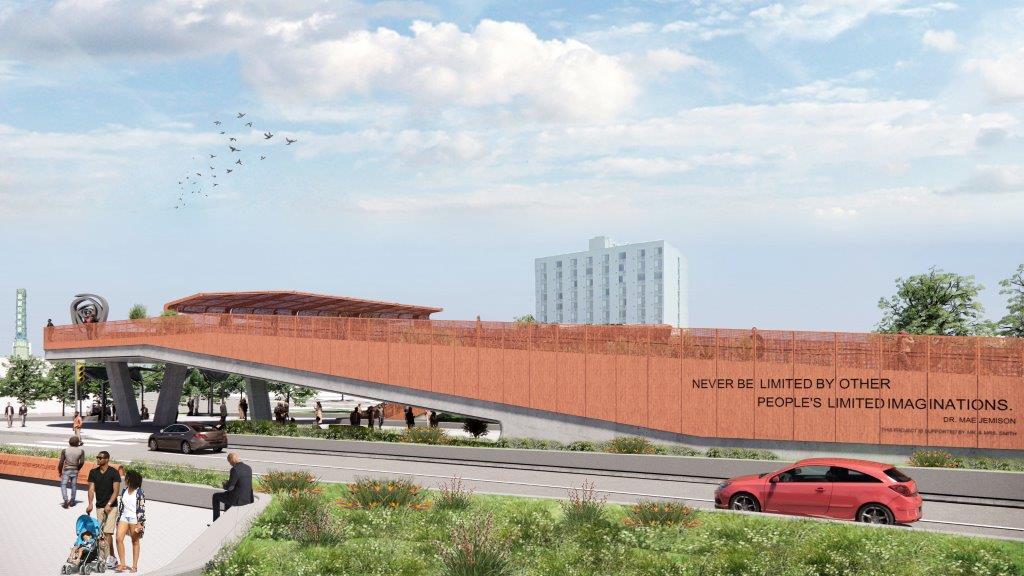
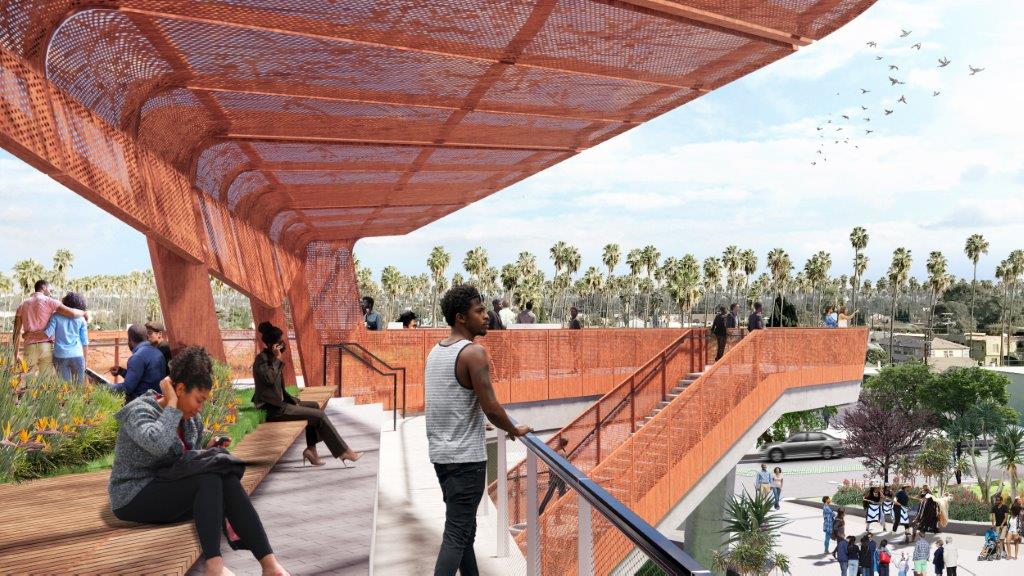

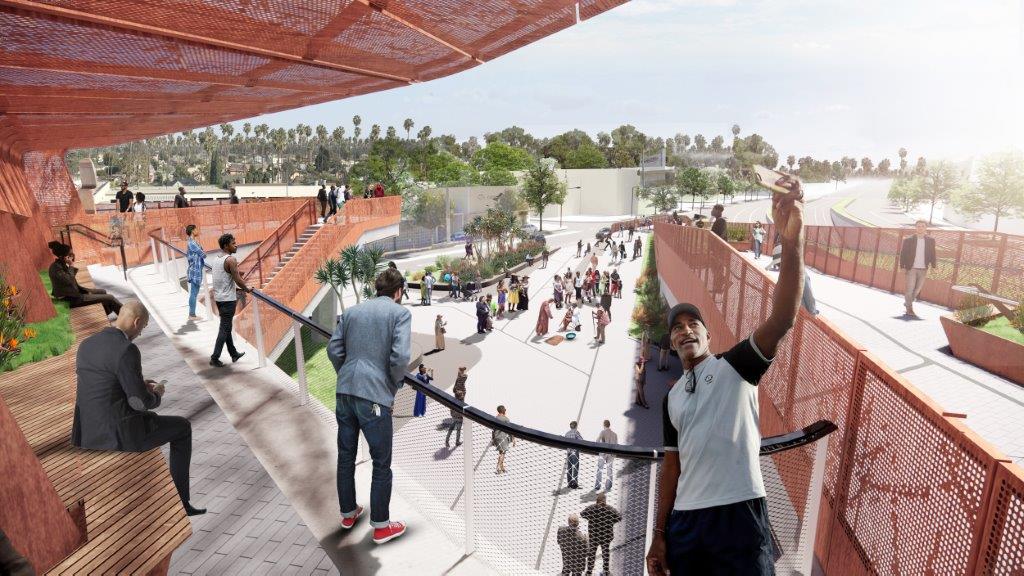
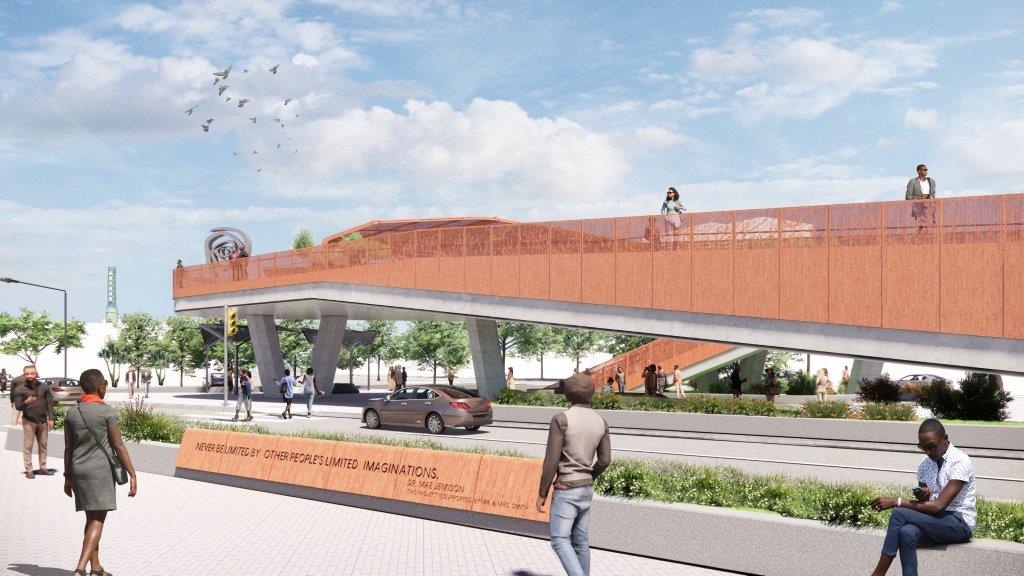
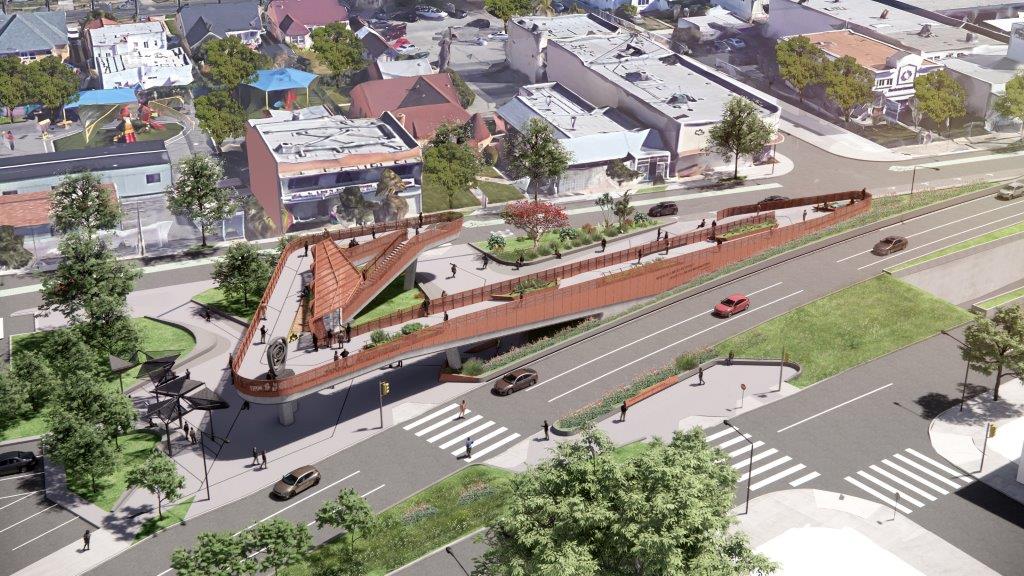
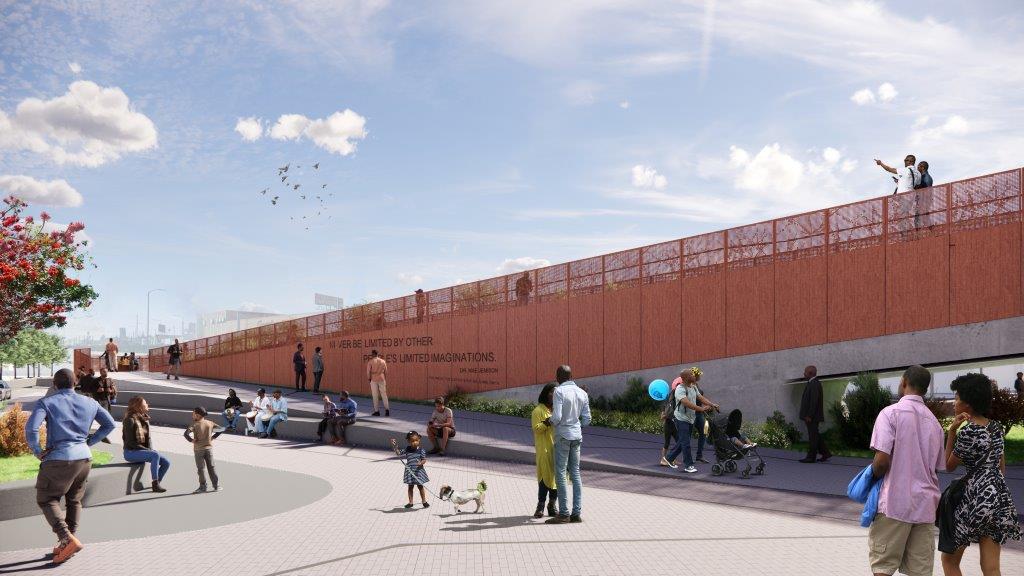
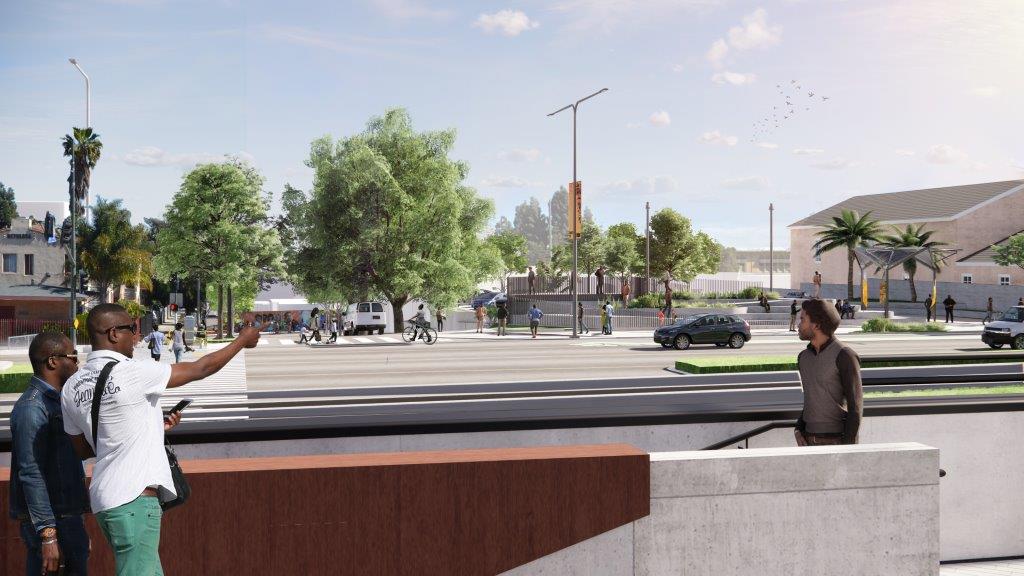
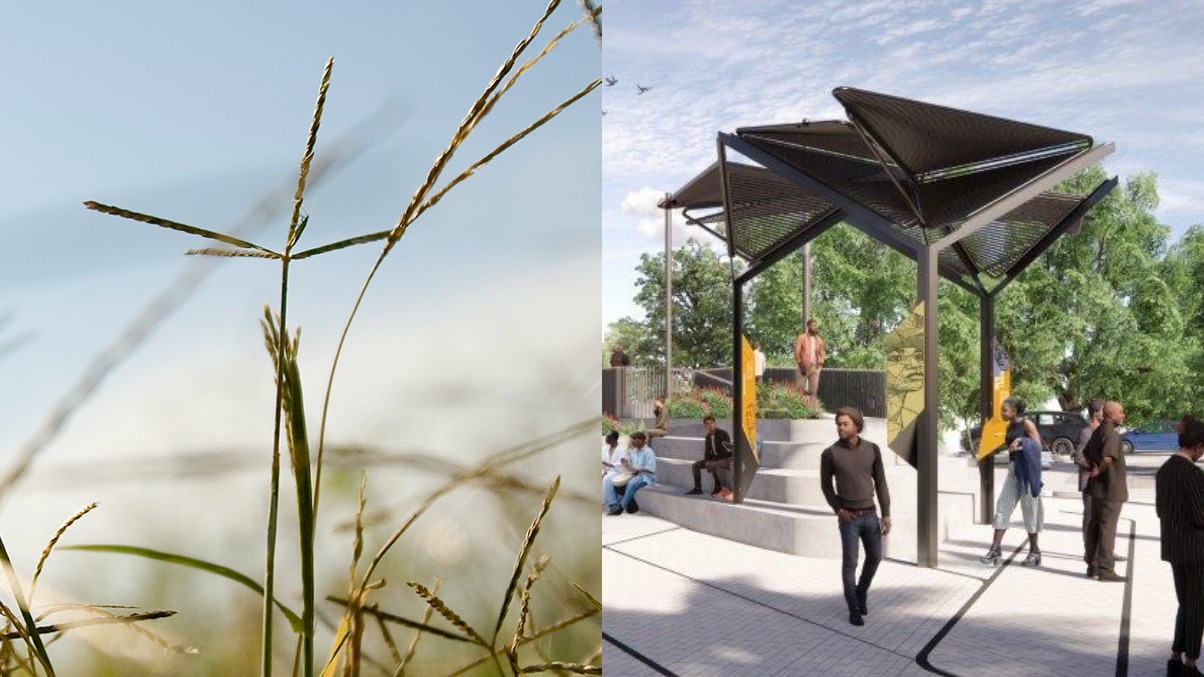
These are the social spaces essential to the fabric of a healthy community. Each will be distinguished by the architectural symbol of Destination Crenshaw, a soaring, modern representation of the African Giant Star Grass. In the pits of slave ships, enslaved Africans utilized this plant as bedding on ships that carried them across the Atlantic.
That bedding took root here – here and everywhere our ancestors landed. The symbol, developed for the project by pioneering Black architects at Perkins & Will, is a powerful visual testament to our resilience, resistance to removal, and the ability to thrive where we are planted.


